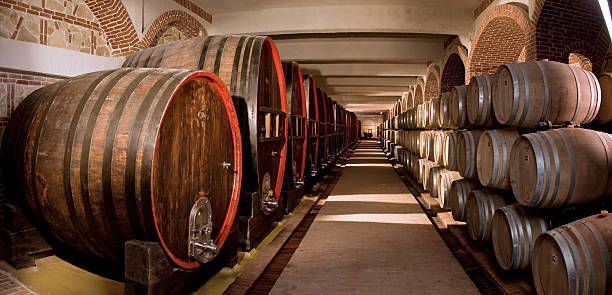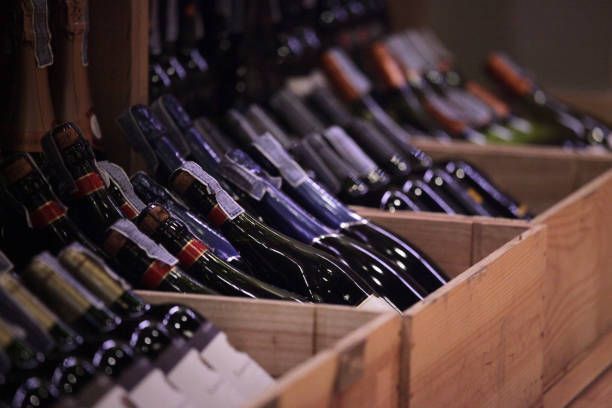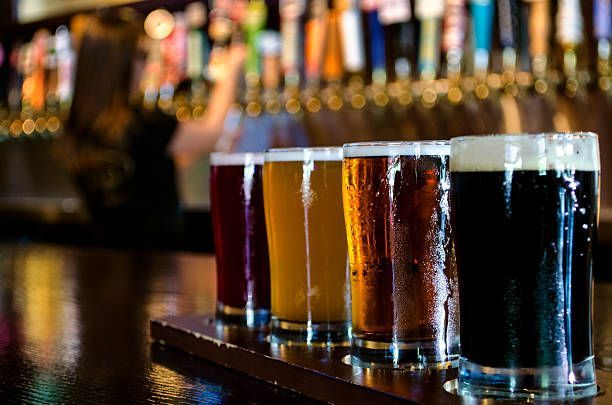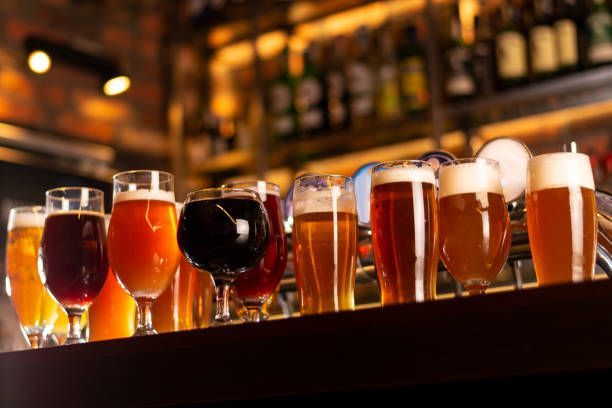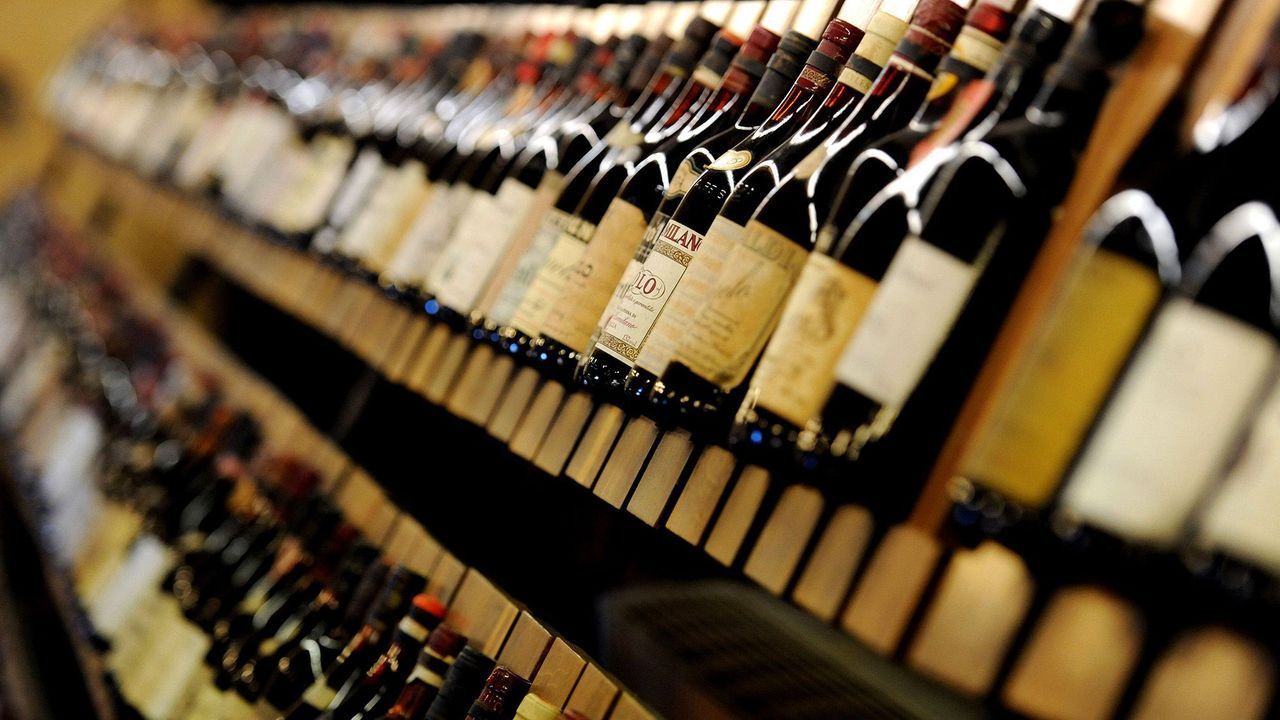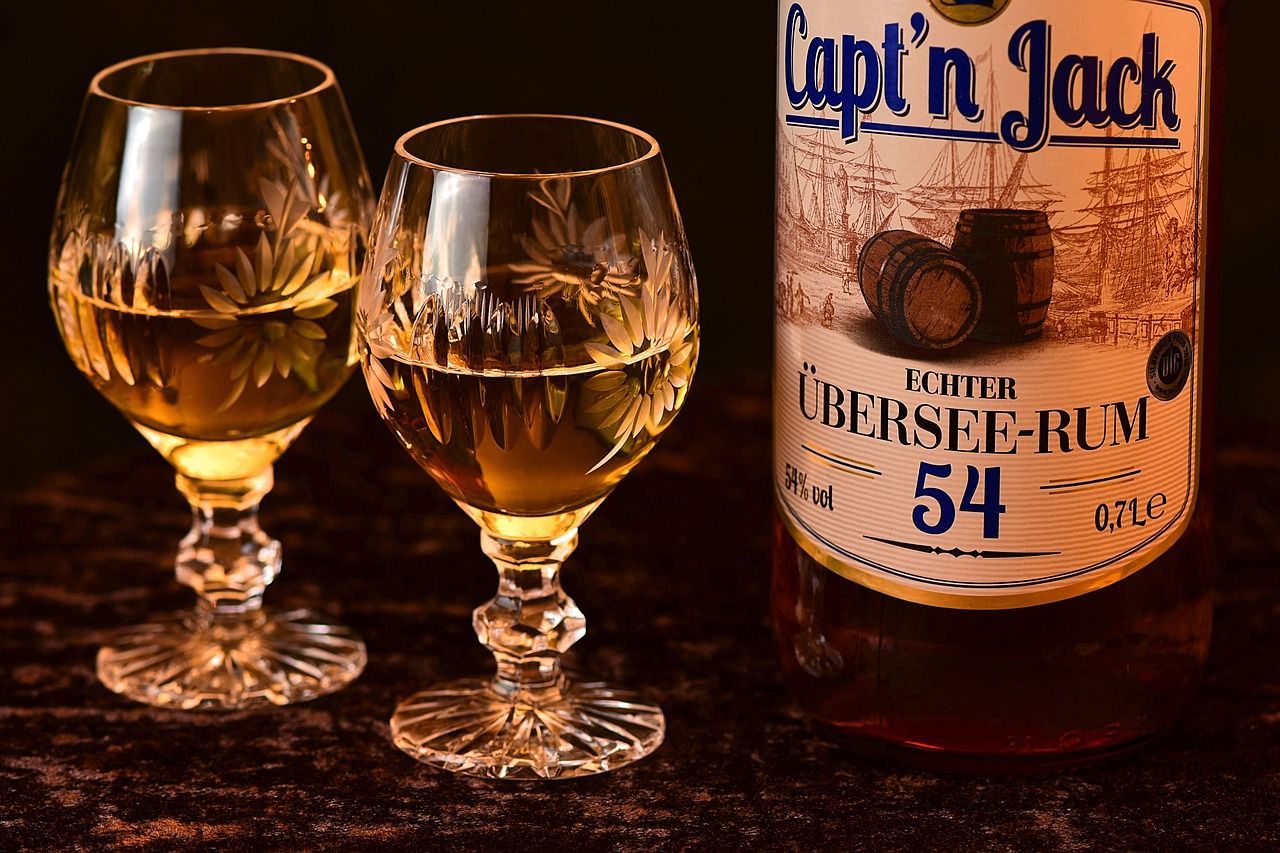Uncorking the Potential of Wine Investment Opportunities
Wine has long been a symbol of luxury and sophistication, enjoyed by the elite of society for centuries. But did you know that investing in wine can also be a lucrative financial opportunity? With the wine industry booming and prices continuing to rise, investing in wine has become an increasingly popular way to diversify one's investment portfolio.
In this blog, we will explore the financial opportunities available in the world of wine, including the different types of investments, the risks and rewards involved, and how to get started. Whether you're a wine enthusiast looking to turn your passion into profit, or a savvy investor seeking new opportunities, this blog is sure to offer valuable insights into the exciting world of wine investment.
Types of Wine Investments
With so many different types of wine investments available, it can be challenging to know which option is the best fit for your portfolio. In this article, we'll take a closer look at three of the most popular types of wine investments: en primeur, bottled wine, and wine funds.
En primeur
En primeur, also known as wine futures, is a popular investment strategy that involves purchasing wine before it's bottled and released on the market. This strategy has been gaining traction in recent years, as it allows investors to purchase high-quality wines from top producers at a lower cost than the retail price.
Investing in en primeur wines has the potential to generate significant returns, as investors are effectively buying the wine at a wholesale price. However, there are risks involved, as the value of the wine can be affected by unpredictable factors such as weather conditions, vintage quality, and production levels. As a result, there is no guarantee that the wine will increase in value as expected.
Despite these risks, en primeur wines are highly sought after by collectors and connoisseurs, making them a valuable addition to any portfolio. They provide investors with access to some of the best wines from top producers around the world, including rare and highly sought-after vintages. Therefore, en primeur can be an attractive option for investors who are willing to take on some risk in pursuit of potential high returns.
Bottle Wine
When investing in bottled wine, investors have the advantage of being able to taste and inspect the wine before making a purchase. This can provide more certainty around the quality and potential value of the investment. Investors can also track market trends to help them make a decision.
However, like any investment, there is always the risk that the wine may not increase in value as expected. While bottled wines are generally considered to be less volatile than en primeur, they can still be affected by market fluctuations, changes in consumer preferences, and shifts in the economy.
Another factor to consider is the cost of storage and insurance. Unlike en primeur, bottled wines have already been bottled and are subject to less market fluctuation. Investors may need to pay for storage and insurance costs, which can add to the overall cost of the investment. Proper storage is critical for maintaining the quality of the wine and ensuring that it increases in value over time, making it important to choose a reputable storage facility with ideal temperature and humidity levels.
Wine Funds
Wine funds are becoming increasingly popular among investors due to the advantages they offer. One of the key benefits of wine funds is that they allow investors to access a diverse range of wines that would otherwise be difficult or expensive to acquire. This diversification can help to reduce risk and potentially increase returns.
Managed by investment professionals, wine funds provide investors with access to their knowledge of the wine market and their ability to identify investment opportunities. Investment professionals can also assist in selecting the best wines for the portfolio, taking into account factors such as producer, vintage, region, and other key indicators. Wine funds can also provide cost savings for investors by pooling their resources and negotiating bulk rates for storage and insurance costs. This can help to reduce the overall cost of the investment and increase profitability.
There are also potential downsides to wine funds that investors should be aware of. One of the main risks is that investors may not have control over which wines are purchased and when they are sold. This lack of control can limit the flexibility of the investment and may impact returns. Another potential downside of wine funds is that they often come with high fees, including management fees, performance fees, and other associated costs. These fees can reduce overall profitability and impact the returns that investors receive.
Factors to Consider When Investing in Wine
Wine has long been considered a luxury item, and as such, it has become an increasingly popular investment option for those seeking to diversify their portfolios. However, with so many different wines and factors to consider, wine investing can be complex and daunting. In this article, we will explore some of the key factors to consider when investing in wine.
Producer
The reputation and brand name of a wine producer are critical factors to consider when investing in wine. This is because the producer's reputation can significantly impact the wine's value and desirability among collectors and connoisseurs. A wine produced by a reputable and established producer is generally considered to have a higher value than one produced by a lesser-known producer.
When evaluating a producer, investors should examine the producer's track record, including their past vintages and reviews from trusted critics. This can provide insight into the quality and consistency of the wines produced by the producer. Additionally, investors should consider the producer's winemaking philosophy, production methods, and vineyard locations. This information can help investors gain a better understanding of the producer's approach to winemaking, which can impact the quality and value of the wine.
Investing in wines produced by well-respected and established producers can help to reduce risks and potentially increase returns. This is because these producers have a track record of producing high-quality wines that are in high demand among collectors and connoisseurs. Investing in wines from such producers can help to ensure that the wine has a good chance of increasing in value over time, making it a wise investment choice for investors looking to add wine to their portfolio.
Vintage
Vintage is a crucial factor to consider when investing in wine, as it can greatly affect the wine's quality and value. Each vintage has its unique characteristics, which can be impacted by weather conditions, soil quality, and other factors. To determine a vintage's potential, investors should examine the weather conditions during the growing season. The weather can significantly impact the grapes' ripeness, acidity, and overall quality. For example, a year with a hot and dry summer may result in grapes with higher sugar levels, which can lead to a full-bodied and rich wine. In contrast, a year with cooler temperatures and rain may result in a lighter wine with higher acidity.
It's also essential to consider the overall quality of the harvest, including factors such as grape yield, disease or pest issues, and the winemaker's skill. Furthermore, consulting trusted critics and experts in the wine industry can provide valuable insights into a vintage's potential.
By carefully evaluating the vintage, investors can make informed decisions about which wines to invest in and when to sell them. It's important to keep in mind that vintage quality can vary by region and even by grape variety, so investors should consider these factors when making their investment decisions.
Region
The region in which a wine is produced is an essential factor to consider when investing. The environmental factors and grape varieties that are unique to a region can significantly impact the flavor and quality of the wine. Some regions, like Napa Valley in California or Tuscany in Italy, have built a reputation for producing high-quality, collectible wines. In contrast, other regions may not be as well-known, and their wines may be less desirable among collectors and connoisseurs.
Investors should assess the region's reputation, history, and overall quality of the wines produced in the area. The climate and soil conditions of a region can impact the flavors and aromas of the wine, as well as the grape variety used to produce the wine. It's essential to consider these factors when making investment decisions.
Moreover, investors should also consider the availability and demand for the wine produced in the region. Some regions have a limited supply of wines, making them highly sought after by collectors and connoisseurs. The availability and demand for wine from a particular region can impact the wine's value, and investors should consider these factors when making investment decisions.
Rarity
Rarity is undoubtedly an essential factor to consider when investing in wine. In general, wines that are rare or produced in limited quantities are highly sought after by collectors and enthusiasts, and as such, they can command premium prices in the market. Such wines are often seen as a luxury item and can be used to make a statement about one's taste and sophistication.
When it comes to investing in wine, rarity is determined by various factors such as production levels, the number of bottles produced, and the availability of the wine. For example, some wineries may produce only a few thousand bottles of a particular vintage, while others may produce tens of thousands or even millions. As a result, wines that are produced in small quantities are often more valuable than those that are widely available.
In addition to production levels, rarity can also be influenced by other factors such as the reputation of the producer, the age of the wine, and the specific vintage. Older vintages, for instance, are often rarer and more valuable than newer ones, especially if they have been well-preserved and maintained in excellent condition.
Furthermore, rare wines can increase in value over time as the supply becomes more limited due to consumption or aging. For example, if a particular wine is highly coveted and there are only a limited number of bottles available, the wine's price is likely to increase as demand continues to outstrip supply. The wine's value can also increase over time as it ages, provided that it has been stored properly and has not been exposed to adverse conditions.
Risks Involved in Wine Investment
Investing in wine has become an increasingly popular way to diversify investment portfolios and potentially earn high returns. However, like any investment, there are also risks involved that investors should be aware of. In this blog, we'll explore some of the risks and benefits of wine investment.
One of the primary risks of wine investment is liquidity risk. Wine is a relatively illiquid asset, meaning that it can be challenging to sell quickly and easily. Unlike stocks or other investments that can be bought and sold on a daily basis, wine requires a specialized market and may take longer to sell. This can make it difficult for investors who need to access their funds quickly or who need to sell their wine investment in a hurry.
Another risk to consider is storage risk. Proper storage is crucial for maintaining the quality of wine and ensuring that it increases in value over time. If wine is not stored in ideal conditions, it can spoil or become damaged, which can significantly reduce its value. Investors should choose a reputable storage facility with proper temperature and humidity levels to minimize this risk.
Counterfeit risk is another potential danger to wine investors. With high-value wines, there is a risk of fake bottles being sold on the market. It's important for investors to work with reputable wine merchants and auction houses to avoid purchasing counterfeit bottles.
Despite these risks, there are also benefits to wine investment. One of the primary benefits is the potential for high returns. Collectible wines can increase in value over time, especially if they are rare, highly rated, or come from well-regarded producers or regions. Wine can be a profitable investment if purchased at the right time and sold at the right price.
Wine can also be a hedge against inflation. In times of economic uncertainty, tangible assets like wine can hold their value better than stocks or other investments that are subject to market fluctuations. Wine can provide a stable source of value that is not tied to the stock market or other traditional investments.
Finally, wine is a tangible asset, which can be a benefit to some investors. Unlike stocks or other investments that exist primarily on paper, wine is a physical asset that can be held and enjoyed. For investors who appreciate the sensory experience of wine, investing in wine can be a rewarding and enjoyable experience
Wine investment can be a lucrative and exciting way to diversify investment portfolios. Investors should be aware of the potential risks involved, including liquidity risk, storage risk, and counterfeit risk. If approached with caution and the right expertise, wine investment can offer high returns, a hedge against inflation, and the enjoyment of a tangible asset.
How to Get Started in Wine Investment
With the potential for high returns and the allure of owning tangible assets, it's no wonder why more and more people are considering wine investment. If you're interested in getting started in wine investment, here are a few steps to help you begin your journey.
Research
The first step in any investment is research. Take some time to educate yourself on the wine market and the different types of wine investments available. Learn about the different regions and producers, as well as the factors that can impact a wine's value, such as vintage, rarity, and condition. You can find information through books, websites, and industry publications, as well as by attending wine tastings and events.
Build a Collection
Once you have a basic understanding of the wine market, you can begin building your collection. Start small by purchasing a few bottles of wine that you enjoy and that have the potential to increase in value over time. As your collection grows, you can begin to diversify by investing in wines from different regions and producers, as well as different vintages and styles
Consider Consulting with a Professional
If you're new to wine investing or unsure about your choices, consider consulting with a professional. A wine investment advisor can help you navigate the complexities of the wine market, provide recommendations on which wines to invest in, and offer advice on storage and insurance. They can also provide access to exclusive wine investment opportunities and help you build a diversified portfolio.
Wine investment offers an exciting opportunity for investors seeking to diversify their portfolios and potentially earn high returns. By considering the different types of wine investments available, evaluating key factors such as producer, vintage, region, and rarity, and being aware of the risks involved, investors can make informed decisions about their wine investments. It's essential to conduct thorough research, build a collection over time, and consider consulting with a professional to maximize the potential of your wine investment. With the right approach, wine investment can provide a profitable and enjoyable addition to any investment portfolio.
